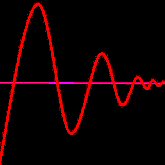 By Moises J Goldman & John Jonelis
By Moises J Goldman & John Jonelis
Our business culture has evolved and attitudes have re-aligned. In sharp contrast to the past, creative employees have finally gained the acceptance and respect they deserve for the crucial role they play in organizational success. The business climate is faster-paced, than ever—rapidly changing, and multicultural. Staunchly individualistic leaders backed by a computer savvy workforce characterize our high tech companies, and increasingly, our entrepreneurial ventures. It is important to appreciate that sequential charts of managerial jargon are no longer well received. Such things impose uniformity, and uniformity is anathema to today’s creative workforce. Under these circumstances, it is extremely challenging to manage product design using yesterday’s managerial paradigms.
This is the third of four installments. We’ve explored the history and current state of modern management philosophy. Now, we will introduce an entirely new mode of thought—the Controlled Design Management Model.

To be meaningful in today’s culture, any shift in management strategy must meet certain critical standards. It must be intuitive, adaptable, focused, practical, and measurable. These are the goals we will set out to achieve.
- Intuitive and Adaptable – No rigid chart or schematic to implement.
- Focused – A practical structure, which zeros in on workflow.
- Practical – Departments will implement the model themselves.
- Measurable – Management can track progress.
In order to achieve these goals, we must build self-optimization into the product cycle and to meet that end, we base our new thinking on Control Systems Theory, as used in such places as computerized system controls and inertial navigation systems. We call it the Controlled Design Management Model. For the purposes of this paper, we will circumvent the complex mathematics of Control Theory and present the ideas in an intuitive format, reducing key concepts to graphical form.

Controlled System
At its most basic form, a Controlled System is a process by which an objective or Input generates an outcome or Desired Output. Suppose, for example, that the system is a bicycle factory and we are trying to build a super bicycle. If the factory, as a system, behaves appropriately, then the factory will output the desired output – a super bicycle. If, on the other hand, the factory does not operate appropriately, the output will be an undesired outcome – perhaps a tricycle. It will be useful to reduce this to graphical form. (See Figures 3a and 3b.)

Figure 3a – Controlled System
.

Figure 3b – Uncontrolled System
This may seem rather simplistic, so let’s build on it. To make the system self-optimizing, we add a feedback loop to the above diagram. (See Figure 4.) When the desired outcome becomes equal to the desired objective, then the error (or difference between objective and outcome) will be zero. Else, corrections are made (called “pivoting” in Lean Theory) until we eventually arrive at the MVP or initial product deployment.

Figure 4 – Simple self-optimizing Controlled System
Let’s see what this elementary flow chart accomplishes. We plot the input and output of the above system, where Time is the X-axis and Magnitude is the Y-axis and produce a graph. The process swings back and forth until it navigates the optimal path. (See Figure 5. Note the similarity to an internal navigation system.)

Figure 5 – Self-optimization through a feedback loop
From Figure 5, we surmise that the output reaches steady state, at t(1) which is when the desired objective is equal to the desired outcome, rendering the error equal to zero. The behavior of the output prior to reaching t(1) is called the transient response and beyond t(1) is called the steady state response.
- Transient Response is composed of idea, concept, feasibility, and definition (from the Traditional Model).
- Steady State Response is composed of Deployment, Growth, and Maturity (from the Traditional Model) and the release of the Minimum Viable Product or MVP (from the Lean Model).
Transient Response relates to the problems of developing a product or process. It might look like the following example: How can we make an elevator reach the twelfth floor more quickly? In actual practice, it may stop at any number of floors on the way, and even overshoot floor twelve before coming back to open the doors for you. Any number of solutions may be proposed. We examine goals, stretch technology, and make tradeoffs.
Steady State Response deals with entirely different concerns. The MVP of an optimized elevator schedule is ready to launch. How can we standardize, market, deploy, and improve the new design or schedule?
Can we control how fast the outcome will reach its objective? The answer is yes. Goldman, Shieh, and Chen proved this many years ago by using the Second Cauer Form of continued fractions expansion.4, 5 Let’s look at it in graphical form. By applying a few minor modifications to Figure 4, we have a self-optimizing module:

Figure 6 – Controlled Design Management Model
Figure 6 differentiates Transient from Steady State responses and adds an Internal Disturbance, representing noise due to poor product design, faulty test equipment, poor engineering, and other considerations. The optimization process reduces such noise closer and closer to zero via the process of a feedback loop. Mathematically speaking, this is the same controlled system as in Figure 3(a), but this representation depicts the separate influences of the transient and steady state responses.

A New Perspective
What advantages does the Controlled Design management Model offer over the Lean and Traditional Models? The first is simply knowing which phase of the model contributes to the transient portion—idea, concept, feasibility, development—and which phase contributes to the steady-state portion—final deployment, growth and maturity of the design. For management, this is critical.
- By controlling the part of development that contributes to the transient response, management can optimize the rise time and minimize time to deployment.
- By controlling the factors that contribute to the steady state response, management can optimize the deployment, growth, and maturity of the product.
A mid to large organization includes many and varied departments through which product development flows from idea generation to maturity. What are some of the advantages to our new model?
- By describing our model in the language of the digital age, each individual department can easily put it into practice.
- Each department is responsible ONLY for what it can control. Each is given a unique decision input and desired output.
- Each department can optimize its output using the model. This, in turn, yields an optimized organization. An optimized organization is, quite simply, the sum of the optimized departments.
Next, we’ll demonstrate these ideas with a practical example.
■
Go to Part 4
Go back to PART 1
Download full paper (PDF)
.
References
- Deming, W. Edwards (1964) [1943]. Statistical Adjustment of Data. Dover. ISBN 0-486-64685-8. LCCN 64-24416. (1966) [1950]. Some Theory of Sampling. Dover. ISBN 0-486-64684-X. LCCN 66-30538.
- William Ouchi: “Theory Z” How American Business can meet the Japanese Challenge. Addison-Wesley Publishing Company, 1981
- Lean was originated by Eiji Toyoda and Taichi Ohno of Toyota Motors. Ohno, Taiichi (1988), Toyota Production System: Beyond Large-Scale Production, Productivity Press, ISBN 0-915299-14-3
- C. F., L. S. Shieh, Joint Automatic Control Conference, Michigan, p 454
- Shieh, L.S. and Goldman, M. J., 1974 I.E.E.E. Trans. Circuit Syst., 21, 341
- The Hollow Corporation, Anita Campbell, Small Business TRENDS (2012) https://smallbiztrends.com/2004/04/hollow-corporation.html
Graphics
Flow-charts by Moises Goldman and John Jonelis.
Graphics from MS Office.
About the Authors
 Dr. Moises J Goldman holds an MSEE and a PhD in Engineering Systems from UCLA, specializing in large-scale systems, process optimization, and product innovation. MBA from MIT Sloan, specializing in strategic planning and business development. His focus is on periods of challenge and change, including startup, growth and restructuring. Goldman served as CEO, COO, and CTO in diverse industries and developed business across the USA, Germany, Spain, Mexico, Dominican Republic, Jamaica, and Brazil, working with small firms as well as branded giants such as Lockheed, Rockwell, ATT, America Movil, GM, Ford, Scotia Bank, and HSBC. Sits on several boards where entrepreneurship and innovation are the primary goals. Consults to merging companies during the integration phase as well as startups, helping them become going concerns. Member of several advisory boards at MIT. Founding member of the TALENT program at IMSA. Dr. Goldman can be reached at Moises.Goldman@outlook.com
Dr. Moises J Goldman holds an MSEE and a PhD in Engineering Systems from UCLA, specializing in large-scale systems, process optimization, and product innovation. MBA from MIT Sloan, specializing in strategic planning and business development. His focus is on periods of challenge and change, including startup, growth and restructuring. Goldman served as CEO, COO, and CTO in diverse industries and developed business across the USA, Germany, Spain, Mexico, Dominican Republic, Jamaica, and Brazil, working with small firms as well as branded giants such as Lockheed, Rockwell, ATT, America Movil, GM, Ford, Scotia Bank, and HSBC. Sits on several boards where entrepreneurship and innovation are the primary goals. Consults to merging companies during the integration phase as well as startups, helping them become going concerns. Member of several advisory boards at MIT. Founding member of the TALENT program at IMSA. Dr. Goldman can be reached at Moises.Goldman@outlook.com
 John Jonelis patented seven products and developed dozens more in the field of air pollution control. Created the Revelation suite of trading algorithms. Private equity investor. Artist. Writer, and publisher of Chicago Venture Magazine and News From Heartland—the Journal of the Heartland Angels. Author of the novel, The Gamemaker’s Father. Illinois Wesleyan BFA, 1974. Kellogg MBA 1989.
John Jonelis patented seven products and developed dozens more in the field of air pollution control. Created the Revelation suite of trading algorithms. Private equity investor. Artist. Writer, and publisher of Chicago Venture Magazine and News From Heartland—the Journal of the Heartland Angels. Author of the novel, The Gamemaker’s Father. Illinois Wesleyan BFA, 1974. Kellogg MBA 1989.
Copyright © 2019 Moises Goldman & John Jonelis. All rights reserved. Quotation with attribution is permitted for educational purposes.
Chicago Venture Magazine is a publication of Nathaniel Press www.ChicagoVentureMagazine.com Comments and re-posts in full or in part are welcomed and encouraged if accompanied by attribution and a web link. This is not investment advice. We do not guarantee accuracy. Please perform your own due diligence. It’s not our fault if you lose money..
.
.

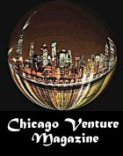



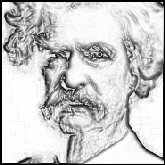


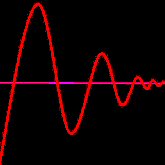

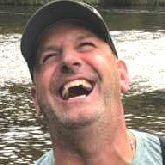


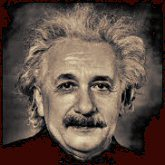























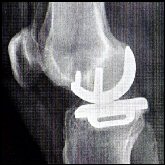
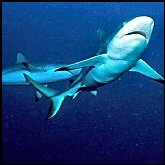
















































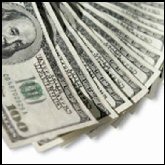

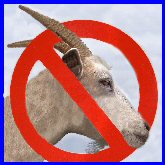













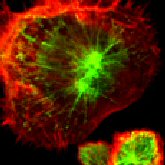









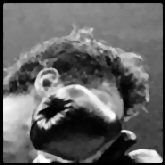








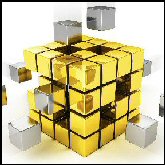












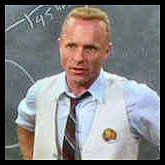



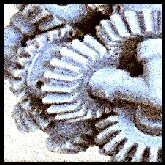



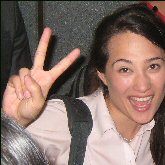























Pingback: CONTROLLED DESIGN MANAGEMENT – Part 2 | Chicago Venture Magazine